On message strategy and more.
On message strategy and more.
Listen, there are primary reasons you should do investigative research with a phone interview.
One of the most practical, productive primary research tools for gathering small data (and crafting your brand’s message) is the good ol’ one-on-one phone interview.
What is small data? You’ll find all kinds of definitions, but simply put, it’s the stuff you, as a human, can comprehend. It’s accessible, understandable, and actionable.
Big data, on the other hand, is more than your brain can handle. It’s massive, complex, and difficult to manage. It’s often characterized by the 3Vs: volume, variety, and velocity.
But let’s talk about the importance of primary research for a sec.
Primary research (which yields small data) gives me heart palpitations. Not the stroke kind. The kid-skipping-into-Disney kind. For years, I’ve studied and taught history, yet I still get giddy thinking about diving into archives, full of glo-ri-ous diaries, letters, photos, newspapers…
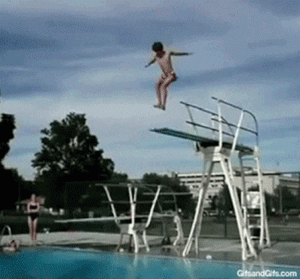 Credit source: tenor.com
Credit source: tenor.com
Primary sources like these are the tools of historians. They’re used to interpret the past, develop and support theses, and convince and debate peers. They tell us a story — if we’re willing to listen — and are essential for understanding the world around us and preparing for the future. They are the key to what makes a message effective.
So what’s really cool for me as a writer is that helping clients develop message strategy isn’t all that different from historical research. I don’t just scan a brief, slap together some nouns and verbs, and hope they spark. Nope. It’s more fun than that. When a project is kicked off, I do primary research. Put what I learn into context. And use it to unpack and share the client’s story.
In our marketing world, big data (the “what”) decontextualizes human behavior. Its terabytes and petabytes are useful for understanding what’s happening around us, yes. But small data (the “why”) is irreplaceable. I like how Martin Lindstrom put it: “Big data is all about finding correlations, but small data is all about finding the causation, the reason why.” 1
— Martin Lindstrom,
Small Data: The Tiny Clues That Uncover Huge Trends
And how another Martin put it: “True change starts with small data: the first time something happens is the start of something new. It’s the small data we’re looking for to find the big disruptions…. When you’re trying to understand fundamental shifts, big data not only stands in the way, but it can lead you into cul-de-sacs or completely astray.” 2
— Martin Schwirn,
Small Data, Big Disruptions: How to Spot Signals of Change and Manage Uncertainty
Another way to think about it is that small data is about human beings, not algorithms. It helps us understand the attitudes, motivations, values, and emotions behind the actions and behaviors that big data culls. It’s that single entry scribbled in an eighteenth-century diary that forces us to step back and rethink everything we thought we knew.
Small data is also arguably the most important component for how we determine strategic positioning and create message strategy at Counterpart. What is your target audience hungry to hear? What do they need to hear? And how do they need to hear it? It’s how we identify what’s desirable, believable, supportable, and ownable in a brand’s DNA. It’s authentic. It already exists. We just bring it into clear view, with what to say and how to say it. (Check out some of the ways we’ve put it to use for health care, high tech, and supply chain clients.)
Back to the phone interview.
A phone interview is literally a direct line to your target audience — whether that’s an internal sales team that simply needs new messaging for assets or a much broader group of stakeholders who needs an organizational strategic framework.
For starters, it’s just so freaking time- and cost-efficient. No meeting place prep or room reservations. No putting on your glad rags. No time behind the wheel. You can reschedule without much hassle. And here’s another big payoff: Interviewees tend to be less intimidated since you’re not face-to-face.
And let’s be honest. When you do interviews, you’re going to come across the occasional Marshawn Lynch — they’re just there so they don’t get fined. And no matter how many jokes you make, or how sincere you sound, they won’t budge. Guess what? You can bail. “Ok, thanks for your time.” *Click* All you did was put the call on your calendar and pick up the phone. Now you can move on to the next person who might have lots of things to say.
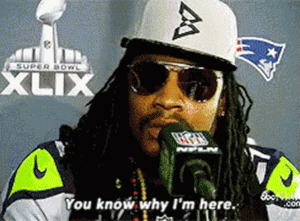 Credit source: tenor.com
Credit source: tenor.com
“But Jenny,” you say, “face-to-face interviews are better because you can’t read body language over the phone.” Fact. But you can listen for verbal and nonverbal clues, such as silences, sighs, pauses, even giggles. (More on that below.) And now that everybody is a Zoom pro, if you’re dead set on going all FBI on somebody, you could always use a platform like that. But I’m telling you, I really think interviewees are more relaxed over the phone and would choose that format almost every time, making the trusty phone interview worth the tradeoff.
So what makes for an effective customer or client phone interview? Glad you asked. I’ve done anthropological, historical, and marketing research via phone, and here’s what I’ve learned along the way.
The plan: How to prep for a client or customer interview
Know what you need to know.
Before you kick off any interview, you should have clear objectives. Know what problems or questions you’re solving for and shape your questions around that. Seems obvious enough, but some of you busy bees will put it off and put it off and then figure you’ll just wing it. (You know who you are.) There’s a time for winging it — sort of — but for the most part, you shouldn’t waste a single precious millisecond of their time or yours with a question that’s not worth asking.
Consider this. We used to have a client who always wanted us to do a little customer survey that asked “What’s your favorite [X]?” “When do you use [Y]?” “What do you use [Z] for?” And so on. And that was all well and good, I suppose. But then we’d be asked to repeat the same survey the next quarter. And the next. Ad nauseam. It left us scratching our heads. Huh? Why? Are you even doing anything with the answers you’re getting? Stop annoying people. Instead, think ahead. Focus on what’s next. Ask preemptive questions that can give your messaging for an upcoming campaign some horsepower.
You can get down ‘n’ dirty in thirty.
Surprised? You can pull it off, but you have to be well prepared.
Since you’ve got a good grip on the type of information you’re looking for, you can nail down seven to twelve strong, multifaceted, open-ended questions. (Stay away from yes/no questions, but I’m sure you already know that.)
Further, it’s okay to send the questions to your interviewee ahead of time. What?! (Yeah, I interrobanged.) That’s cheating! There’s no ahhHAH moment in that!
Pipe down, Perry. We’re building a case for clear, compelling communication, not a capital crime.
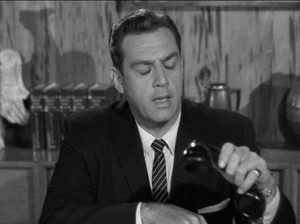 Credit source: wordpress.com
Credit source: wordpress.com
It’s okay to let them prepare. Consider it a professional courtesy. A way to reduce the stress that comes along with being interrogated by a stranger. And selfishly, consider it a way to harvest potentially well-thought-out answers with fewer “uhhhhhs” and “I dunnos.” Truth be told, some of your interviewees will simply scan the questions beforehand to make sure they’re comfortable with them, while yes, others will prepare an opus. Okay. Whatever. What you need is a fruitful dialogue, not an ambush. So relax, provide the questions in advance, and prevent spinning wheels and wasting time.
BTW, for the long-winded people in the back, the thirty-minute window is flexible. If the vibes are good, the convo is flowing, and you both want to continue talking, then by all means, kick back and get comfortable for a spell. It happens. But you know what else happens? Busy people. Ridiculously busy people with no time to spare. And you want to respect that. You scheduled thirty, so assume you’re gettin’ thirty. It behooves you to come prepped, right out of the gate.
Power in (smartly chosen) numbers.
Whether you’re doing the interviews — or paying someone to do them for you — certain factors help you determine the number of people you interview. Like staffing, timelines. But in reality, the biggest factor is most likely that B word: budget.
The good news is that if you establish a pool of great interview candidates (meaning they know their stuff, have lots of experience, etc.), then you’re in good shape.
For example, as the pandemic set in, we had clients who needed new creative that reflected ever-evolving customer needs. The messaging was absolutely 100% centered around direct feedback from boots-on-the-ground salespeople who were adapting to COVID conditions in real time. Their personal experiences and challenges, as opposed to their in-house marketing team without direct contact with customers, were key.
So about those numbers… Believe it or not, you can get some great info from as few as three to five people per stakeholder group, but no fewer than three. For example, three customers, three salespeople, three managers, three directors, three vendors, three whatevers. You can certainly interview more than three per stakeholder group, but again, remember that budgets and timelines and resources don’t always permit it. Plus, there’s a point of diminishing returns if you go overboard. So choose your interviewees wisely. And whatever you do, please don’t confuse this with choosing people who will only give you the answers you’d like to hear.
The chat: Some interview best practices
This is a recording.
You probably have your own notetaking preferences, and that’s fine. I don’t type up notes as I go because I hate the sound effects. I do tend to jot down particular phrases or thoughts on paper (old school) as the interview goes on. And I make notes to circle back to a particular question or statement later instead of interrupting my interviewee’s train of thought or response.
But. I. Must. Record! During the interview, I want to listen to the person I’m speaking with. Really listen. Let my cerebral wheels squeak. Interact organically. I don’t want to be so focused on dictation that I miss an opportunity to press a point or miss a cue. Knowing I can go back and listen, or read the transcription, gives me the freedom to be in the moment. (Plus, I can’t read my own handwriting. Bloody horrible, it is.)
Just remember to have your recording device ready. And whatever you do, [clears throat] make sure it’s on.
Warm it up [Jen. I’m ’bout to… ].
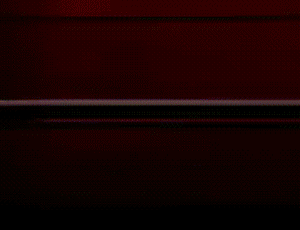 Credit source: gfycat.com
Credit source: gfycat.com
Get started by introducing yourself. Tell them why you’re speaking with them (even though they’ll undoubtedly already know) and help them relax. Basic approach, yes. But this really is an important opportunity to set the tone for the interview by not only breaking the ice and lowering a heartrate, but establishing a comfortable rapport. Assure them that their time is appreciated, and there are no right or wrong answers. Seriously, this is just as important as having great questions. An interviewee at ease is a researcher’s best friend.
With intros and objectives established, begin the interview with some simple warm-up questions: Tell me about your role. How long have you been doing that? Don’t linger here too long, though. The clock is ticking.
Know when to go rogue-ish.
This can be tricky. Especially if you’re working within a thirty-minute window and must squeeze in all of your brilliant questions. Make a judgment call. In short, you need to be flexible, letting the conversation go here and there, occasionally over yonder… particularly if it yields some good info (maybe even stuff you hadn’t thought of). And you just might get some great stories this way, personal anecdotes, and these are research JACKPOT! Plus, you don’t want to come across as smiting somebody through the phone if they dare stray from your line of questioning.
What you don’t want to do, however, is let them take you on a ten-minute detour about how they just had to put four new tires on their Toyota. That is NOT jackpot. That is jacked up. Precious time now in your rear-view mirror. So figure out a way to politely get back on track.
Also, make sure your recording device hasn’t also gone rogue. Is it still on?
Shhhhppffffft!
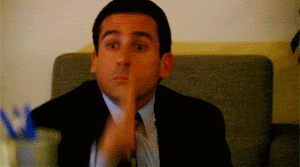 Credit source: tenor.com
Credit source: tenor.com
You should know by now I’m in it for the stories. And that means I have to know when to be quiet and listen. To be patient with awkward silences. Give enough space to allow a story to develop. You know, like a big, powerful funnel cloud, gathering strength, pulling in bits and pieces — until finally, it forms, and it has the power and momentum to alter the landscape. Yeah, it takes discipline to wait out silences. And, let’s face it, they can be as daunting as an actual funnel cloud.
But think about it. Silence comes with most interviews, over the phone or otherwise, especially right after you ask a question (unless they’re one of those overachievers who prepared the opus). It’s a natural part of discourse.
Some smart person somewhere said silence is a little more awkward over the phone, though, and can inhibit trust because you can’t see what’s going on with the other person (e.g., you can’t see them tapping their chin, thinking something through, furrowing their brow, writing something down)3. So okay… I’m good with that. Either way, just know that the interview is an exchange of information, a conversation. Resist the urge to rescue your interviewee with suggestive statements or by moving on to another question. In other words, give them time to develop their F5.
Sometimes silence screams.
Not only are silences a normal part of discourse, they can speak volumes. Do they reveal hesitations? Do you sense distrust? Does this say something about a lack of knowledge or process? Do they expose a gap that needs to be addressed in your deliverable or message? These could be opportunities — loud and clear.
Putting on my historian hat again, we’re trained to look for what the primary source doesn’t say. When it comes to interpreting a source and putting it into context, sometimes the lack of information or acknowledgement or perspective can be as telling as what the source does say. Sometimes it’s obvious. Sometimes it’s not. I think that point is just as salient with research interviews.
On the flip side, listen to verbal clues. Are there deep sighs after questions? How do you interpret those? The meaning could be as straightforward as “Oh boy, this answer is complicated, and I gotta figure out how to explain it to this yahoo.” Or it could be more of an emotional cue, even frustration: “I don’t think I can say what I reeeally think here.”
Call BS (with finesse).
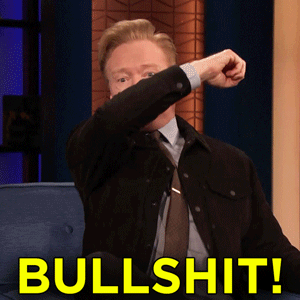 Credit source: giphy.com
Credit source: giphy.com
You’ve worked to build trust. Cracked some jokes. Been self-effacing. Your interviewee is chattier than me twelve minutes into Happy Hour(s).
Now it’s time to play what I like to call [cough] “Bullshit.” If you’re a cynic at heart (I can’t help it), this is the moment you’ve been waiting for. This is not as sinister as it sounds, actually. And it does serve a valid purpose. So here we go…
Don’t be afraid to make interviewees move past canned responses about brands, or services, or work environments, or whatever. Push back. “I hear you, but what if… ” Be a disgruntled customer. Play devil’s advocate. Make them convince you in their own words why their product or service is better, unique, worth it. And you know what? Maybe they can’t. (That, my friend, is a whole different blog post.) Either way, you know what you’re dealing with and can develop message strategy accordingly.
Let me put it to you like this.
Another tactic is to restate or reinterpret your interviewee’s point or explanation. They connect with this, see it as validation, affirmation — a “Yeah, you get it!”
For example, let’s say my interviewee is a lender at a small-town financial institution, privy to sensitive, confidential information of everybody and their mama-n-m’s cousins. She’s trying to explain to me what that’s like for her. Now, I’ve never worked at a financial institution, much less at one in a small town — but my mother did (true story). She knew more than she ever wanted to know about her customers. From balances, to bankruptcies, to great-grandbabies’ names. And those relationships extended beyond the walls of the bank, right into grocery store aisles and high school basketball games. So, yeah. It could be weird.
I can relay that info back to my small-town-lender interviewee: “You know, that sounds like when my mom… ” And just like that, that simple synapse, that recognition of her daily challenges, builds trust and helps the conversation grow. To be crystal clear, I don’t mean to suggest trickery here. The opposite, really. This is about connecting dots, recognizing shared human experiences.
Know what else helps connect the dots? Your recording device. Don’t forget to make sure it’s on.
Be two- or three-faced. Maybe even four on a good day.
This is so simple, but it pays dividends. You can get good info by asking pretty much the same question different ways. Kind of like they do on those personality tests where they ask you the same question seven different ways to see if you’re being dishonest about whether or not you’re an ass to work with or if you’d take a pack of post-it notes home.
What kind of employee would be ideal for your team?
What kind of person would be a bad fit for your team?
What makes your customers choose your product?
What makes your customers choose another product instead of yours?
What kind of customer do you think your product serves best?
Tell me about the smartest dumb person you know.
Tell me about the dumbest smart person you know.
See what I mean.
For some reason, people will process these tweaks differently, come at them from different angles, and give richer, deeper answers. Pretty sure it has something to do with the amygdala or hippocampus or something. (Trust me. I’m a doctor. I say doctor things.)
And please, whatever you do, make sure your recording device isn’t off. (See what I did there?)
Post-interview afterglow
Was it good for you?
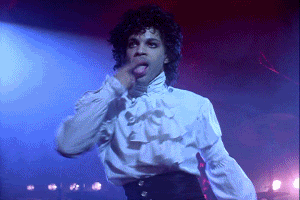 Credit source: reactiongifs.com
Credit source: reactiongifs.com
Take some time (preferably immediately) after the interview and reflect. What struck you? Surprised you? Did they have the personality of a cucumber seed? Was it like pulling teeth? Were they absolutely delightful? Do you low-key wish you could go grab a beer with them? Did you say anything stupid? Are there any takeaways that can help you in remaining interviews? Did the interview expose any new questions?
If there were any bits of information that you definitely don’t want to overlook, or connections to other parts of your research, note them ASAP. Because transcriptions are great, but they’re looooong. And often you end up pulling a Fran Pearlmutter,4 deciphering all the um um um conversational fluff and well, you know, ivory misinterpreted peach of land wage youth can Emma gin. (Or maybe that’s just what I tell myself to make it more exciting.)
And speaking of transcripts, be prepared to provide them to whoever is funding your research. Even if you provide a general summary of the interview (which you should), they still love to read those damn things. Turns out, I’m not the only one who gets giddy about primary research.
See. Good thing you checked to make sure that recording device was on.
Remember: Phone interviews are a direct line to the living, breathing human beings you serve.
They’re quick. Convenient. Cheap. Malleable. And when it comes to primary research, they’re a no-brainer for gathering the small data that can help you generate big change and a message that resonates. You and/or an internal team can benefit tremendously from speaking directly and listening to your customers, clients, or fellow employees.
We’ve used small data to serve a lot of folks in a lot of industries. If you’d like some help with your primary research, or you want to learn more about how we use phone interviews to help us create message strategy, drop us a line.
1 Quote from Why Small Data is the New Big Data, a “Knowledge@Wharton” podcast. Accessed November 10, 2021. https://knowledge.wharton.upenn.edu/article/small-data-new-big-data/.
2 Martin Schwirn, Small Data, Big Disruptions: How to Spot Signals of Change and Manage Uncertainty. (Newburyport, MA: Career Press, 2021), 9.
3 Emily S. Block and Laura Erskine, “Interviewing by Telephone: Specific Considerations, Opportunities, and Challenges,” International Journal of Qualitative Methods 11, no. 4 (September 2012): 428-45.
4 Badass. See also https://www.bu.edu/bostonia/2019/she-was-a-world-war-ii-codebreaker/.




